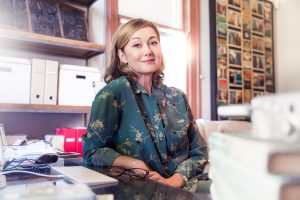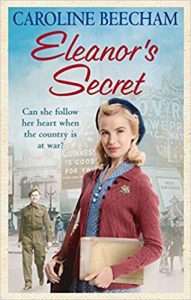Writing and Research: Tips
 Eleanor’s Secret is my second novel inspired by real events from the Second World War and it required thorough research for background, for inspiration, and to help create an authentic setting for the story. The idea evolved after reading about the War Artists’ Advisory Committee that was set up to produce an artistic and documentary history of Britain during wartime.
Eleanor’s Secret is my second novel inspired by real events from the Second World War and it required thorough research for background, for inspiration, and to help create an authentic setting for the story. The idea evolved after reading about the War Artists’ Advisory Committee that was set up to produce an artistic and documentary history of Britain during wartime.
I discovered that of the 400 war artists, thirty-seven were given fulltime contracts and that thirty-six were men and there was only one woman; this really sparked something for me. In wartime Britain women were taking on the majority of roles previously held by men yet that wasn’t reflected in the WAAC or the art world. I imagined there would have been women artists who had an issue with this, and Eleanor soon became one of them!
The novel has dual storylines that alternate between 1942, as Eleanor strives to become a war artist, and 2010, when Eleanor asks her granddaughter, Kathryn, to return a precious painting to its artist, Jack Valante, and to find out what happened to him. So there are a few locations but the main ones are London and Kent. As I’m based in Sydney, Australia I carried out research in three ways; through reading related fiction and non-fiction books, through online research, and by visiting the settings in the novel.
How do you research a novel when you live a long away from the source material?
I didn’t find it was too much of an obstacle being a long way from where my story is set because the Internet gave me access to great online resources but I think it’s very important to still visit the locations, or have former knowledge of them, to bring out those intangible details and record the senses; how a place smells, and the local sounds for example. I approached my first novel, Maggie’s Kitchen, in the same way and because I have family in the UK and still visit frequently, I’m able to combine research trips with family holidays.
 I’ve also found that planning and being organised in the information I’ve needed has been really important. With my first novel Maggie’s Kitchen, I probably went overboard on the research, immersing myself in the detail from the UK National Archives on how the Ministry of Food worked and how the British Restaurants were built and operated.
I’ve also found that planning and being organised in the information I’ve needed has been really important. With my first novel Maggie’s Kitchen, I probably went overboard on the research, immersing myself in the detail from the UK National Archives on how the Ministry of Food worked and how the British Restaurants were built and operated.
While that level of information does help create setting, it’s easy to fall in love with your research and get side-tracked so with my second novel, Eleanor’s Secret, I knew that I needed to be more focused to meet my deadline. And a tip that my writing tutor, James Bradley, once gave me was that research is useful when you write around the novel with publicity and articles, so you do get to use the interesting material eventually!
When I was researching Eleanor’s Secret I came across these War Pictures by British Artists booklets that were published in 1942 and they became a research tool but also formed part of the clues that helped Kathryn solve the wartime mystery. In fact, the institutions I visited for research: the Imperial War Museum, the National Gallery and the British Library, also became important in Kathryn’s search and were included in the story. We’re so lucky that libraries and institutions hold these valuable resources and catalogues, and that they are impressive buildings in their own right—the Kings Library at the British Library in particular.
How long do I spend researching before I start writing?
If you have the luxury of time then the research process can take as long as you want it to and you can thoroughly research the background to your novel before you even start writing. But if you have a time limit or feel motivated to start writing, then good planning means that you can research and write simultaneously.
My first novel, Maggie’s Kitchen, involved a lot of archival research and so I spent four years researching and writing, trawling the UK National Archives and lots of background reading, including wartime recipe books and first-hand accounts from the era. And for some reason I also decided to include wartime recipes so then had to test and adapt them for contemporary tastes—crazy really but family and friends helped with the cooking!
In my experience the two most important factors with research are firstly, that you know enough for your story that you develop a second memory bank, so that it feels completely natural for your characters to do what they do and it doesn’t feel at all forced. And secondly, that you keep a really good record of your research so that when your editor asks you a question you can readily give the answer because the information is close to hand.
Even though you might be writing fiction, editors still want to know that a bus really did take the route you wrote in 1942, or that the time you say it takes to travel from once place to another is right. And there are the occasional readers who write to let you know when you have done a good job describing somewhere and got your facts right, and there are others that let you know when you’ve got it wrong! It’s not anything to worry about though; it’s such an exciting part of the process—the discovery of new facts on your way to creating the world of your book—and so it’s important to trust your instincts and enjoy this stage.
As I said in my book, it’s a real privilege to be able to find out about these lesser known histories and I’m really grateful to all the librarians, historians and other authors who have helped along the way.
—
Caroline is the best-selling author of Maggie’s Kitchen, and a new novel, Eleanor’s Secret, published May 2018. Her debut novel was shortlisted for Booktopia’s Best Historical Fiction in 2016 and nominated as Book of the Year and Caroline as Best New Author by AusRom Today. Her books are published by Allen & Unwin in Australia and New Zealand and Ebury Press in the UK.
Follow her on Twitter https://twitter.com/CarolineBeecham
Eleanor’s Secret
 An engrossing wartime mystery of past deceptions, family secrets and long-lasting love. Shifting between a Second World War ravaged London and the present day, Eleanor’s Secret is a surprising mystery and compelling love story.
An engrossing wartime mystery of past deceptions, family secrets and long-lasting love. Shifting between a Second World War ravaged London and the present day, Eleanor’s Secret is a surprising mystery and compelling love story.
Kathryn can’t refuse when her grandmother, Eleanor, asks her to help find out what happened to the artist, Jack Valante, but when the search uncovers a long-held family secret, Kathryn has to make a choice that will change her family’s future.
London, 1942: When art school graduate, Eleanor Roy, is recruited by the War Artists’ Advisory Committee to help their scheme employing artists, she comes one step closer to realising her dream of becoming one of the few female war artists. But breaking into the art establishment proves difficult until she meets painter, Jack Valante, only to be separated by his sudden posting overseas.
Melbourne 2010: It’s a difficult time for designer Kathryn to leave Melbourne for London; her husband Christopher rarely puts family before work and her young son Oliver has learning difficulties that demand extra devotion. She has never been away from him but has always shared her grandmother’s passion for art and love of a favourite painting. Now Eleanor is adamant the painting must be returned to its owner, the war artist Jack Valante – and nobody knows if he is still alive.
Kathryn’s journey takes her back to Eleanor’s life as a young woman as she uncovers Jack’s missing war diaries and uses new technology to try and solve the puzzle of the missing artist, confronted by Jack’s record of war compared to the depiction of terrors of the present day.
But when it becomes evident that Jack’s nephew is trying to stop her finding him, and her concern for Christopher’s care of Oliver deepens, she has to decide whether to return home or risk the dangers to carry on.
Category: Contemporary Women Writers, How To and Tips
























